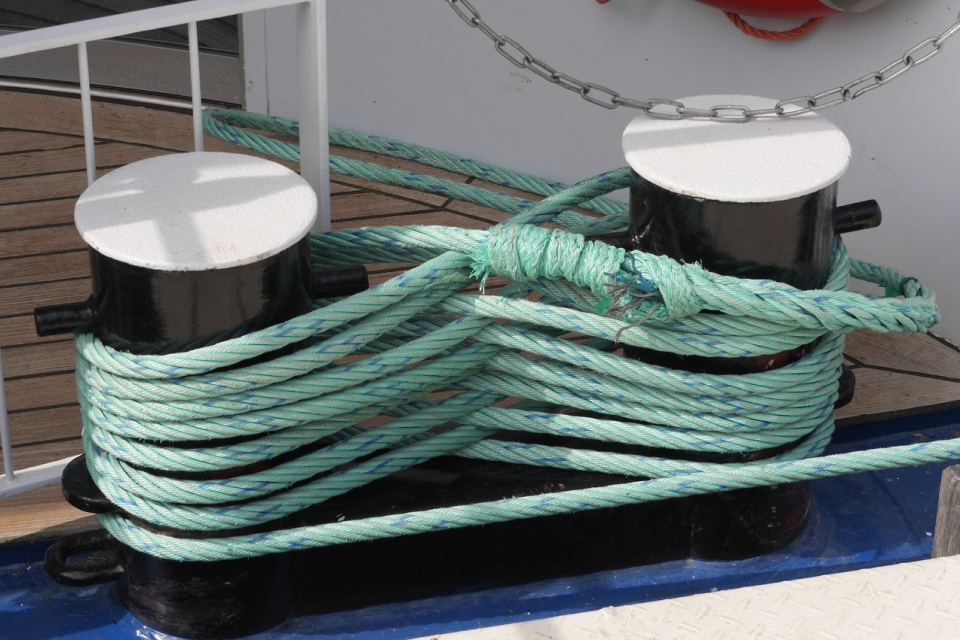A mooring master displayed poor coordination of vessels’ manoeuvring during a ship-to-ship bunkering operation. It resulted in lines snapping and a broken bunker hose. The Nautical Institute discusses the incident in its latest Mars Report.
The Nautical Institute gathers reports of maritime accidents and near-misses. It then publishes these so-called Mars (Mariners’ Alerting and Reporting Scheme) Reports (anonymously) to prevent other accidents from happening. A summary of this incident:
A tanker was scheduled for bunkering at a deep sea location via a ship-to-ship (STS) transfer. The bunker barge was made fast alongside the tanker and the bunker hose connected, but one of the aft mooring lines parted before the bunkering operation could begin.
While the mooring team was replacing the parted line, the mooring master on the bunker barge instructed the tanker to stop engine. This caused the tanker and the bunker barge to slowly turn to port, so that the swell came increasingly on the beam.
About twenty minutes later, the tanker’s master challenged the mooring master about the situation, but it was too late. With the swell now nearly on the beam, the rolling action of the vessels occasioned higher stresses on the remaining lines. As the vessels drifted further apart, these lines also started parting.
It was decided to disconnect the bunkering hose and abort the operation, and the teams were instructed accordingly. The tanker crew started to disconnect the bunker hose, but the hose came under tension before all the bolts could be released. As the tension on the hose increased, the disconnection team cleared the area for their own safety.
The bunkering hose eventually broke away from the manifold and the hose flange snapped, struck on the hose resting bar and went overboard.
Also read: ‘Treat mooring lines as you would a loaded gun’
Investigation findings
The company investigation found, among other things, that the weather conditions were considered borderline, yet acceptable. The swell at the time of the incident was not high enough to threaten the safety of the operation had the vessels kept moving. But once the vessels stopped, they slowly swung perpendicular to the direction of the waves, which led to excessive rolling and much higher forces on the mooring lines.
It would appear that the mooring master on board the bunker barge displayed poor coordination of the vessels’ manoeuvring and was not properly in control of the situation as the incident unfolded. The master on the tanker realised too late the consequences of stopping the engine.
Additionally, the company checklist seems to have been mis-used by the crew. Such vital items as ‘Is the ship upright and at a suitable trim?’, ‘Are mooring gangs in position?’, ‘Are berthing and mooring procedures agreed including fender positions and number/type of ropes to be provided by each ship?’ were marked as ‘Not Applicable’ by the master even though the swell (2 metres) and bunker vessel size (183 metres) indicated this particular operation as high risk on the checklist risk matrix.
Also read: Nautical Institute: Stay out of the ‘line of fire’ when working with mooring lines
Advice from The Nautical Institute
- STS operations require good team planning and coordination, on and between both vessels.
- The number and location of all lines and fenders, among others, should be pre-determined for an STS operation.
- Good practices for STS operations can be found in the “Ship-to-Ship Transfer Guide for Petroleum, Chemicals and Liquefied Gas” published by Marisec.
Mars Reports
This accident was covered in the Mars Reports, originally published as Mars 202404, that are part of Report Number 375. A selection of the Mars Reports are also published in the SWZ|Maritime magazine. The Nautical Institute compiles these reports to help prevent maritime accidents. That is why they are also published (in full) on SWZ|Maritime’s website.
More reports are needed to keep the scheme interesting and informative. All reports are read only by the Mars coordinator and are treated in the strictest confidence. To submit a report, please use the Mars report form.
Also read: ‘Safe working with mooring lines needs a turnaround in thinking’








